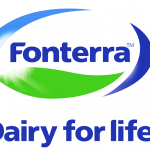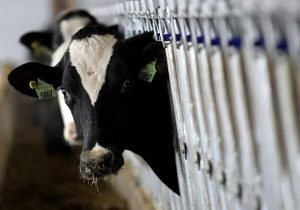
Two dairy farming neighbours in Denmark have been milking cows together for more than 20 years and say the partnership model works well for them.
Kjartan Poulsen, chair of the Danish milk producers association, farms on the west coast of the Scandinavian country, 30 kilometres north of Esbjerg.
Poulsen had 45 cows in 1998, when he joined forces with his neighbour. Today they milk 900 cows between them.
Normally, farming partnerships are more common within families where farms have been handed down through the generations. However, for Poulsen and his neighbour, the business arrangement has proven successful.
“I started with 45 cows and in 1998 joined with my neighbour who had 200 cows,” said Poulsen. “His son joined us in 2013 and in total we currently have 900 cows and farm 1,500 hectares (3700 acres), 1,000 (2,500 acres) of which are rented.
“Both our farms practice organic production and that is how I started back in 1989,” he added.
Denmark produces 5.5 billion litres of milk per year and organic production accounts for about 14 percent of that total. Dairy exports from Denmark account for more than 20 percent of all Danish agricultural exports, making it an important sector for the industry.
Dairy exports bring in around $3 billion to Denmark’s economy each year. Imported cheese and yogurt account for 25 percent and 20 percent, respectively, of the country’s total domestic consumption.
As with nearly every other country, the number of dairy farms in Denmark has decreased. In 2005, there were 6,300 dairy farms there but by 2018 this had dropped to 3,000 farms with a total of 570,000 dairy cows.
Poulsen and his neighbour have split the cows up on the two farms into different milking groups. The herd is all Holstein Friesian and averages 9,000 litres per cow per year at 4.2 percent butterfat and 3.4 percent protein.
“We are milking on two farms and the first one has all the first-time calving cows in two teams. The second farm keeps all the older cows also in two teams,” said Poulsen.
“Team one includes cows from calving to around 100 days, and the second team is with bulls. We do not use AI very often in Denmark,” he said.
“Both the cows and the young stock graze outside from around April 20 normally, but this year it was very early on April 1, and stay out until around Oct. 1.
“We milk twice per day on both farms. One site has a rotary 40-unit parlour and the other has a 40 side-by-side, fast-exit parlour.
“Our milk quality is quite good at 4.2 percent butterfat and 3.4 percent protein. During the summer our butterfat is 3.7 percent and 4.4 percent in the winter time.
“All of our milk goes to Arla and we receive around 43.5 euro cents (63.5 cents) per litre, which has been a stable price for the past eight months,” he said.
On both farms, 17 staff work full time in the summer and 12 to 14 staff stay on during the winter months.
The use of technology is important to Poulsen to improve efficiencies.
“We use auto tracking on the machinery for the fieldwork to reduce costs,” he said. “There are no future plans at the moment to add more technology. We don’t want to expand our cow numbers but we have invested in a biogas plant on the farm,” he said.
When discussing what the main issues with dairy farming in Denmark are at the moment, Poulsen immediately said “the flies.”
“All in all, right now the main problem with dairy farming is mastitis. Even though our herd’s mastitis levels are still very low compared to the overall average in Denmark, this summer there seems to be more flies.
“We have to apply repellent on the back of the cows and young stock regularly to try and keep them at bay and to keep mastitis levels down.”
Poulsen has children of his own but isn’t too worried if they don’t want to follow in his farming footsteps.
“Indeed this is a farming partnership but I don’t think any of my children will be farmers. This is no issue for me, as in dairy farming you have to be a little crazy, carrying out lots of work for little pay,” he said.

























